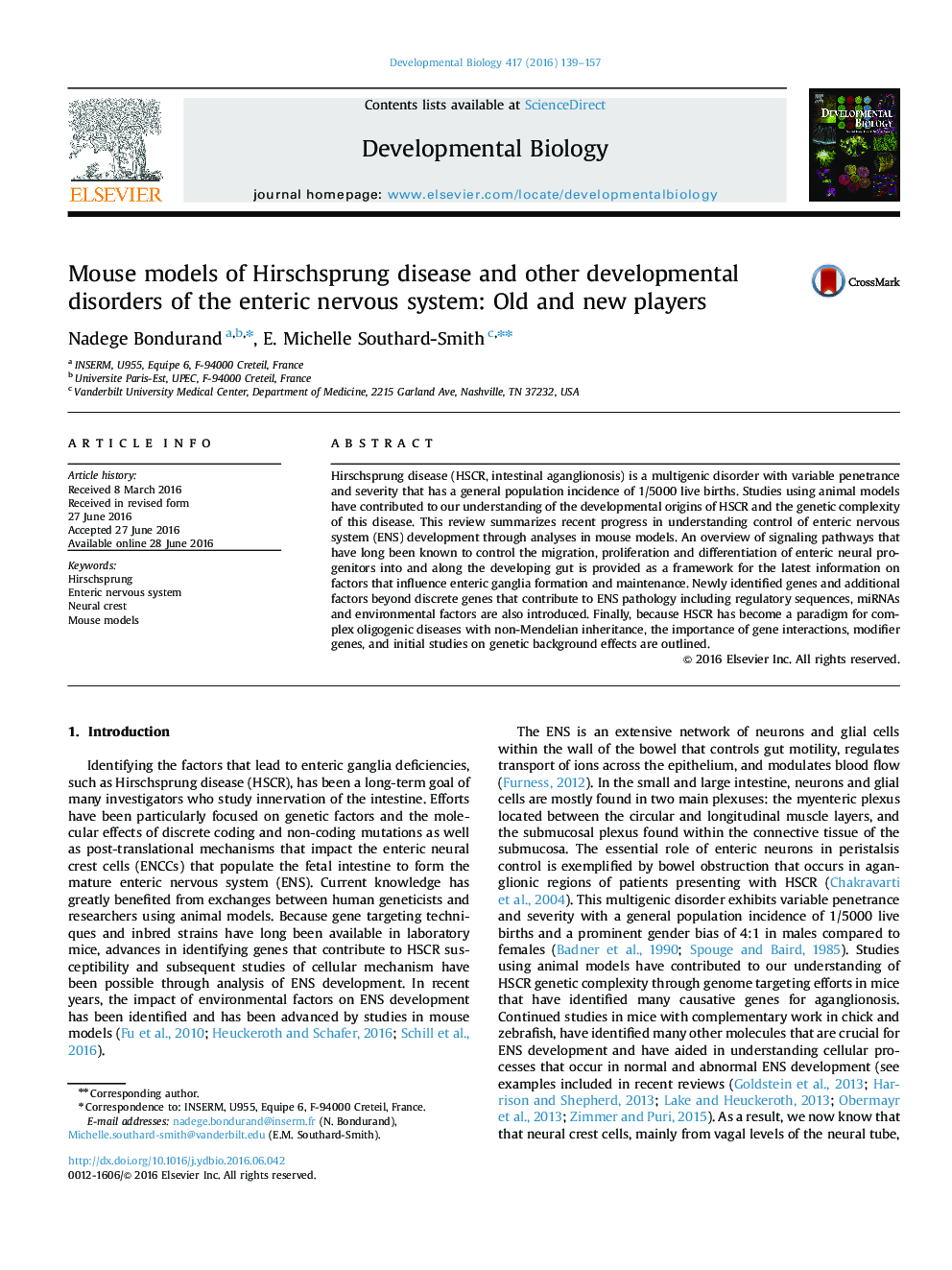| Article ID | Journal | Published Year | Pages | File Type |
|---|---|---|---|---|
| 5531781 | Developmental Biology | 2016 | 19 Pages |
â¢We review studies in mouse models that have identified many genes that impact the enteric nervous system.â¢Single gene mutations in mice can cause aganglionosis or more subtle ENS alterations that affect gastrointestinal motility.â¢New alleles, mutant screens, double mutant crosses, and chemical screens have identified novel factors in ENS development.â¢Development studies of these factors in mice offer a means to understand mechanisms that predispose to ENS disease.
Hirschsprung disease (HSCR, intestinal aganglionosis) is a multigenic disorder with variable penetrance and severity that has a general population incidence of 1/5000 live births. Studies using animal models have contributed to our understanding of the developmental origins of HSCR and the genetic complexity of this disease. This review summarizes recent progress in understanding control of enteric nervous system (ENS) development through analyses in mouse models. An overview of signaling pathways that have long been known to control the migration, proliferation and differentiation of enteric neural progenitors into and along the developing gut is provided as a framework for the latest information on factors that influence enteric ganglia formation and maintenance. Newly identified genes and additional factors beyond discrete genes that contribute to ENS pathology including regulatory sequences, miRNAs and environmental factors are also introduced. Finally, because HSCR has become a paradigm for complex oligogenic diseases with non-Mendelian inheritance, the importance of gene interactions, modifier genes, and initial studies on genetic background effects are outlined.
